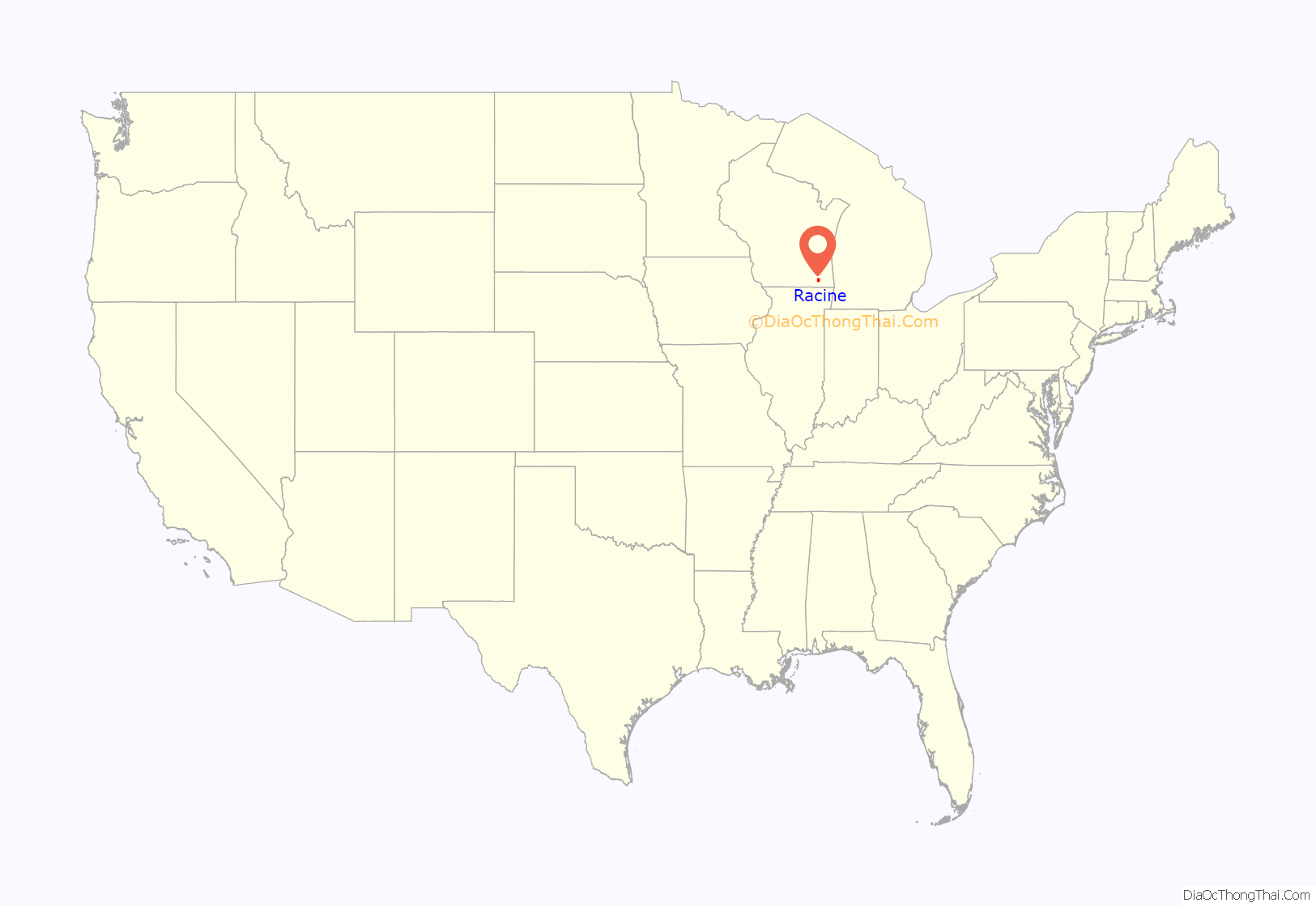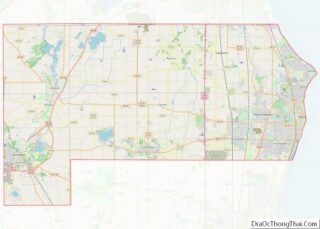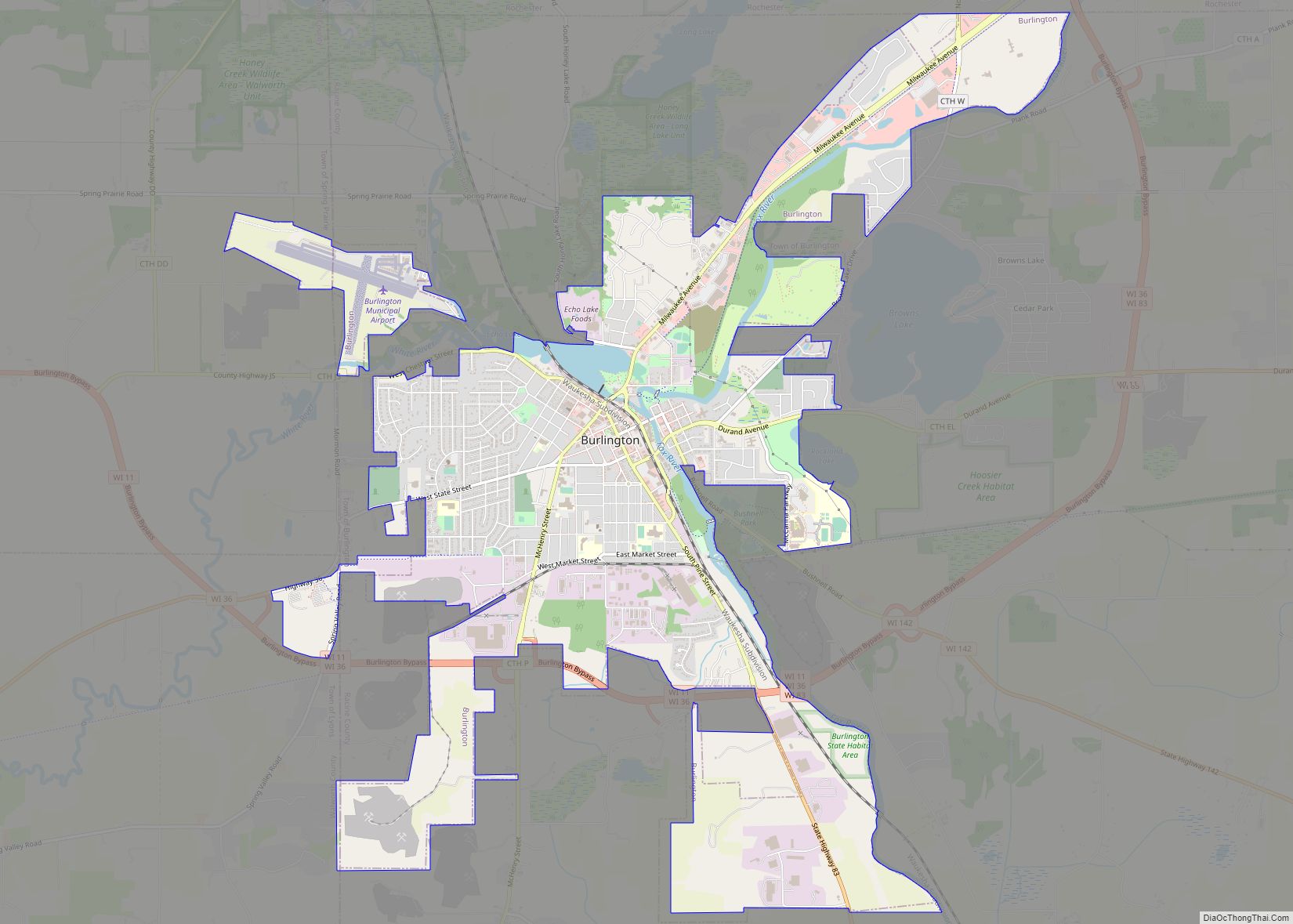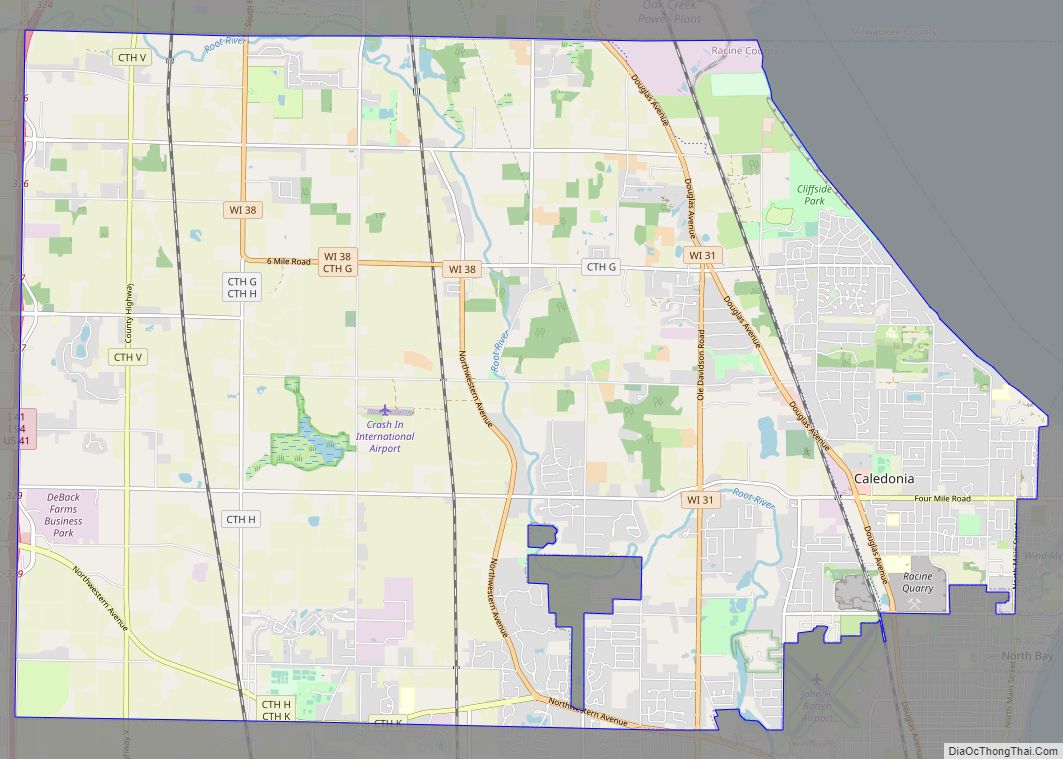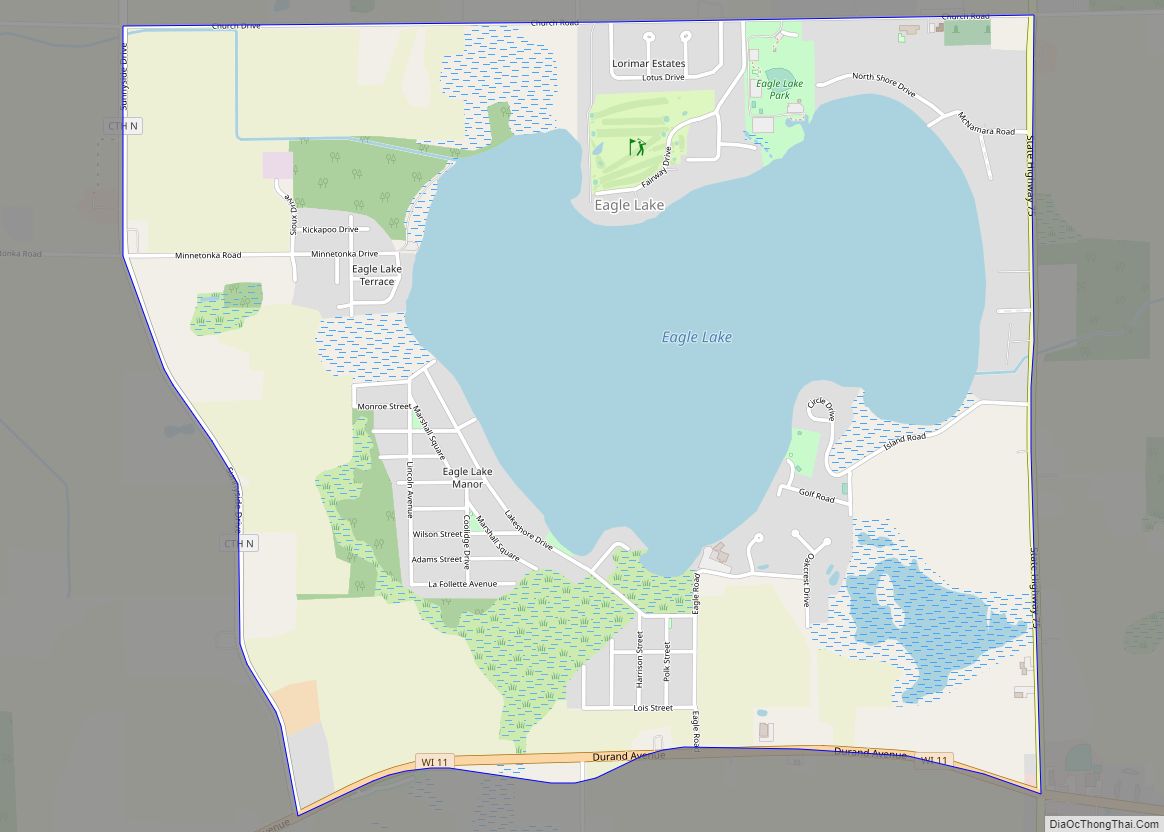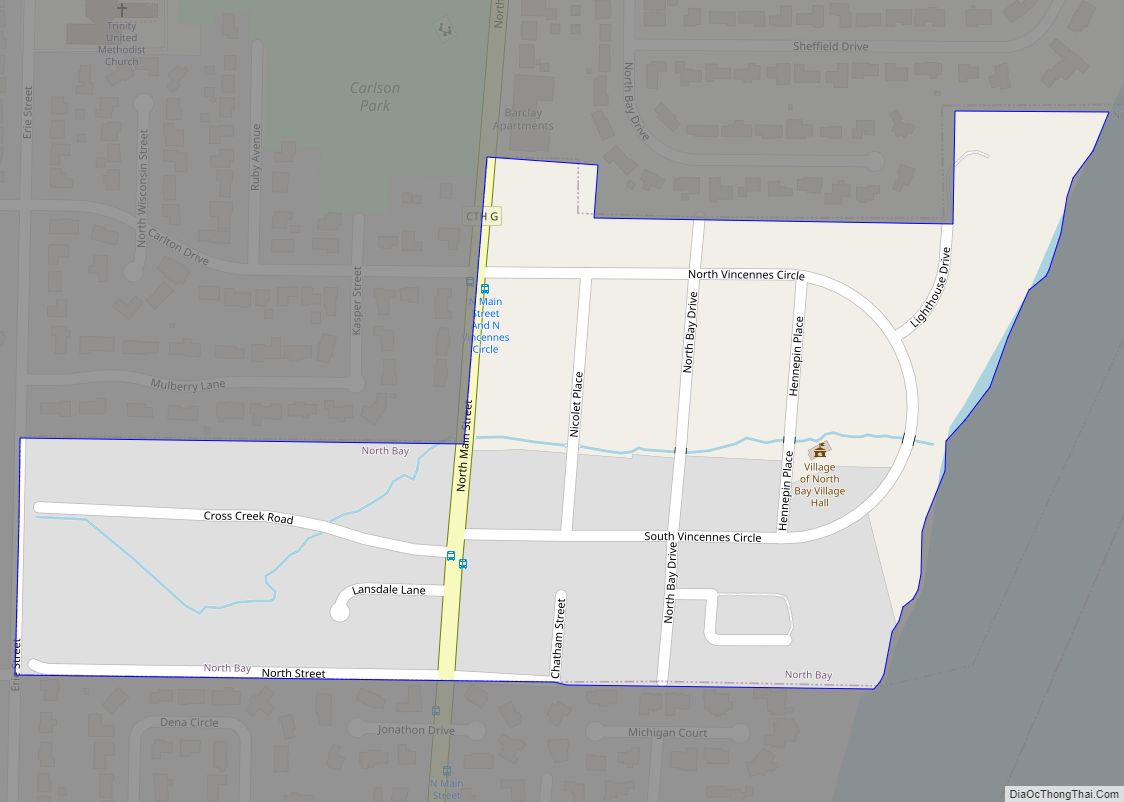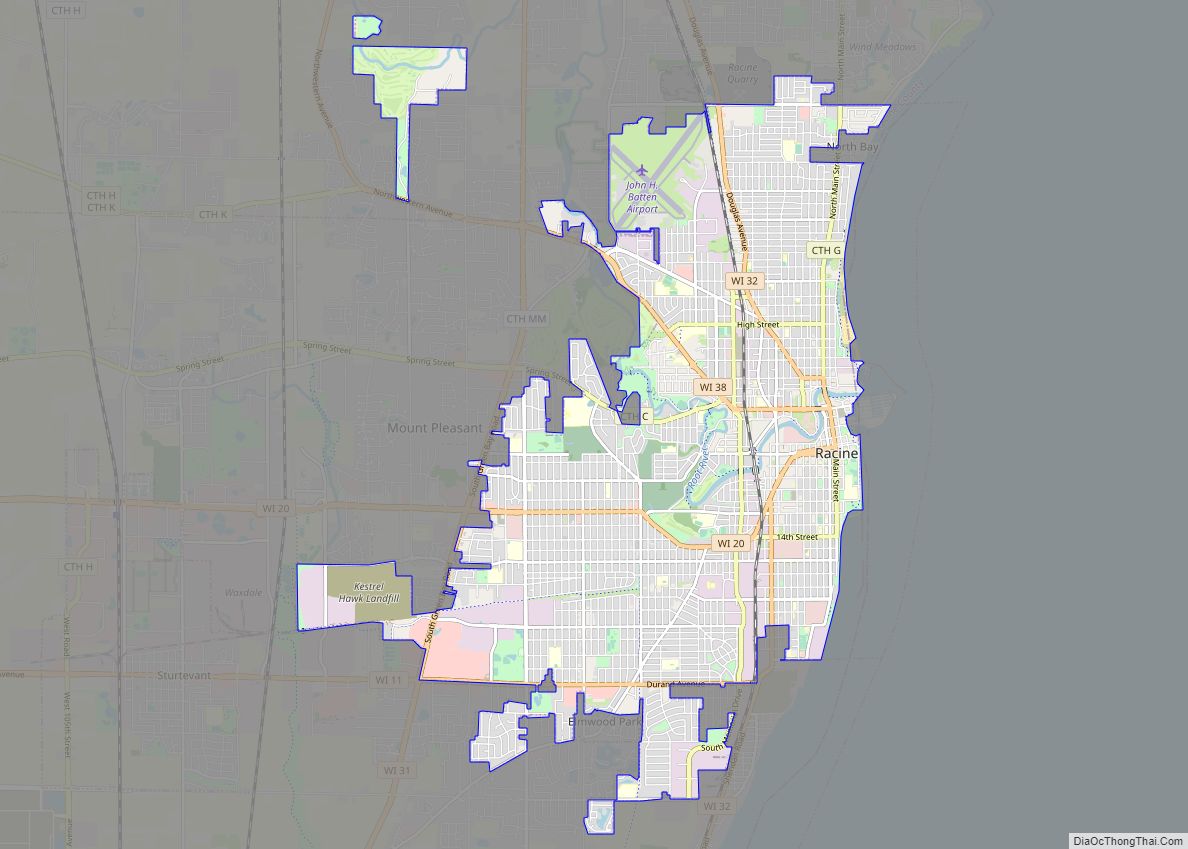Racine (/rʌˈsiːn/ ruh-SEEN) is a city in and the county seat of Racine County, Wisconsin, United States. It is located on the shore of Lake Michigan at the mouth of the Root River. Racine is situated 22 miles (35 km) south of Milwaukee and approximately 60 miles (100 km) north of Chicago. It is the principal city of the US Census Bureau’s Racine metropolitan area (consisting only of Racine County). The Racine metropolitan area is, in turn, counted as part of the Milwaukee combined statistical area. As of the 2020 U.S. Census, the city had a population of 77,816, making it the 5th largest city in Wisconsin. In January 2017, it was rated “the most affordable place to live in the world” by the Demographia International Housing Affordability survey.
Racine is the headquarters of a number of industries, including J. I. Case heavy equipment, S. C. Johnson & Son cleaning and chemical products, Dremel Corporation, Reliance Controls Corporation time controls and transfer switches, Twin Disc, and Arthur B. Modine heat exchangers. The Mitchell & Lewis Company, a wagonmaker in the 19th century, began making motorcycles and automobiles as Mitchell-Lewis Motor Company at the start of the 20th century. Racine is also home to InSinkErator, manufacturers of the first garbage disposal. Racine was also historically home to the Horlicks malt factory, where malted milk balls were first developed, and the Western Publishing factory where Little Golden Books were printed. Prominent architects in Racine’s history include A. Arthur Guilbert and Edmund Bailey Funston, and the city is home to some works by renowned architect Frank Lloyd Wright.
| Name: | Racine city |
|---|---|
| LSAD Code: | 25 |
| LSAD Description: | city (suffix) |
| State: | Wisconsin |
| County: | Racine County |
| Elevation: | 618 ft (188 m) |
| Land Area: | 15.47 sq mi (40.08 km²) |
| Water Area: | 0.18 sq mi (0.48 km²) |
| Population Density: | 4,960.26/sq mi (1,915.13/km²) |
| Area code: | 262 |
| FIPS code: | 5566000 |
| GNISfeature ID: | 1572015 |
| Website: | cityofracine.org |
Online Interactive Map
Click on ![]() to view map in "full screen" mode.
to view map in "full screen" mode.
Racine location map. Where is Racine city?
History
Native Americans inhabited the area of Racine for thousands of years. Artifacts that have survived include the burial mounds in what is now Mound Cemetery. Historians separate the natives living in the Root watershed at that time into Woodland people and Hopewell people. After European contacted the Natives, the Miami and later the Potawatomi expanded into the area, taking part in the French fur trade.
In November 1674, while traveling from Green Bay to the territory of the Illinois Confederation, Father Jacques Marquette and his assistants, Jacques Largillier and Pierre Porteret, camped at the mouth of the Root River. These were the first Europeans known to visit what is now Racine County. Further expeditions were made in the area by René-Robert Cavelier, Sieur de La Salle in 1679 and by François Jolliet De Montigny and Jean Baptiste Bissot, Sieur de Vincennes in 1698. Nearly a century later, in 1791, a trading post would be established along Lake Michigan near where the Root River empties into it.
Following the Blackhawk War, the area surrounding Racine, which had previously been off-limits, was settled by Yankees from upstate New York and New England. In 1834 Captain Gilbert Knapp USRM, who was from Chatham, Massachusetts, founded the settlement of “Port Gilbert” at the place where the Root River empties into Lake Michigan. Knapp had first explored the area of the Root River valley in 1818, and returned with financial backing when the war ended. Within a year of Knapp’s settlement hundreds of other settlers from New England and western New York had arrived and built log cabins in the area surrounding his own. Some of the settlers were from the town of Derby, Connecticut, and others came from the New England states of Connecticut, Massachusetts, Vermont, New Hampshire and Maine. The area was previously called “Kipi Kawi” and “Chippecotton” by the indigenous peoples, both names for the Root River. The name “Port Gilbert” was never really accepted, and in 1841 the community was incorporated as the village of Racine, after the French word for “root”. After Wisconsin was admitted to the Union in 1848, the new legislature voted in August to incorporate Racine as a city.
In 1852, Racine College, an Episcopal college, was founded; it closed in 1933. Its location and many of its buildings are preserved today by the Community of St. Mary as part of the DeKoven Center.
Also in 1852, Racine High School, the first public high school in Wisconsin, opened. The high school operated until 1926, when it was torn down to make way for the new Racine County Courthouse, an Art Deco highrise. Washington Park High School was built to replace the original high school.
In 1857, a man named Edwin Crawford was sawing a log in half when he would claim to see a UFO (Unidentified Flying Object) land in his backyard with a little ramp opening out and 5 red figures walk out and wave at him, smiling. He would then go on to write poems about his experience, posting them in the local newspaper before disappearing without a trace.
Before the Civil War, Racine was well known for its strong opposition to slavery, with many slaves escaping to freedom via the Underground Railroad passing through the city. In 1854 Joshua Glover, an escaped slave who had made a home in Racine, was arrested by federal marshals and jailed in Milwaukee. One hundred men from Racine, and ultimately 5,000 Wisconsinites, rallied and broke into the jail to free him. He was helped to escape to Canada. Glover’s rescue gave rise to many legal complications and a great deal of litigation. This eventually led to the Wisconsin Supreme Court declaring the Fugitive Slave Law of 1850 unconstitutional, and later, the Wisconsin State Legislature refusing to recognize the authority of the U.S. Supreme Court.
Industry
Racine was a factory town almost from the beginning. The first industry in Racine County included the manufacture of fanning mills, machines that separate wheat grain from chaff. Racine also had its share of captains of industry, including J. I. Case (heavy equipment), S. C. Johnson & Son (cleaning and chemical products), and Arthur B. Modine (Heat Exchangers). Racine’s harbor was central to the shipping industry in Wisconsin in the late 19th century. Racine was also an early car manufacturing center. One of the world’s first automobiles was built there in 1871 or 1872 by J. W. Cathcart, as was the Pennington Victoria tricycle, the Mitchell, and the Case.
In 1887, malted milk was invented in Racine by English immigrant William Horlick, and Horlicks remains a global brand. The garbage disposal was invented in 1927 by architect John Hammes of Racine, who founded the company InSinkErator, which still produces millions of garbage disposers every year in Racine. Racine is also the home of S.C. Johnson & Son, whose headquarters were designed in 1936 by Frank Lloyd Wright. Wright also designed the Wingspread Conference Center and several homes and other buildings in Racine. The city is also home to the Dremel Corporation, Reliance Controls Corporation and Twin Disc. Case New Holland’s Racine manufacturing facility, which builds two types of tractors (the New Holland T8 and the Case IH Magnum), offers public tours throughout the year.
Historic districts and buildings
Racine includes the Old Main Street Historic District. Historic buildings in Racine include the Badger Building, Racine Elks Club, Lodge No. 252, St. Patrick’s Roman Catholic Church, YMCA Building, Chauncey Hall House, Eli R. Cooley House, George Murray House, Hansen House, Racine College, McClurg Building, First Presbyterian Church, Memorial Hall, Racine Depot, United Laymen Bible Student Tabernacle, Chauncey Hall Building, Thomas P. Hardy House, and Horlick Field. The area is home to several National Register of Historic Places listed structures: National Register of Historic Places listings in Racine County, Wisconsin. The city is also home to Regency Mall.
Frank Lloyd Wright designed and built the Johnson Wax Headquarters building in Racine. The building was and still is considered a marvel of design innovation, despite its many practical annoyances such as rainwater leaks. Wright urged then-president Hib Johnson to build the structure outside of Racine, a city that Wright, a Wisconsin native, thought of as “backwater.” Johnson refused to have the Johnson Wax Headquarters sited anywhere other than Racine.
Racine Road Map
Racine city Satellite Map
Geography
According to the United States Census Bureau, the city has a total area of 15.66 square miles (40.56 km), of which, 15.47 square miles (40.07 km) is land and 0.18 square miles (0.47 km) is water.
Climate
Racine has a warm-summer Continental climate (Köppen climate classification: Dfb). Summers are warm and short while winters are cold. Precipitation is dispersed evenly throughout the year, although summers are slightly wetter and more humid than winters.
See also
Map of Wisconsin State and its subdivision:- Adams
- Ashland
- Barron
- Bayfield
- Brown
- Buffalo
- Burnett
- Calumet
- Chippewa
- Clark
- Columbia
- Crawford
- Dane
- Dodge
- Door
- Douglas
- Dunn
- Eau Claire
- Florence
- Fond du Lac
- Forest
- Grant
- Green
- Green Lake
- Iowa
- Iron
- Jackson
- Jefferson
- Juneau
- Kenosha
- Kewaunee
- La Crosse
- Lafayette
- Lake Michigan
- Lake Superior
- Langlade
- Lincoln
- Manitowoc
- Marathon
- Marinette
- Marquette
- Menominee
- Milwaukee
- Monroe
- Oconto
- Oneida
- Outagamie
- Ozaukee
- Pepin
- Pierce
- Polk
- Portage
- Price
- Racine
- Richland
- Rock
- Rusk
- Saint Croix
- Sauk
- Sawyer
- Shawano
- Sheboygan
- Taylor
- Trempealeau
- Vernon
- Vilas
- Walworth
- Washburn
- Washington
- Waukesha
- Waupaca
- Waushara
- Winnebago
- Wood
- Alabama
- Alaska
- Arizona
- Arkansas
- California
- Colorado
- Connecticut
- Delaware
- District of Columbia
- Florida
- Georgia
- Hawaii
- Idaho
- Illinois
- Indiana
- Iowa
- Kansas
- Kentucky
- Louisiana
- Maine
- Maryland
- Massachusetts
- Michigan
- Minnesota
- Mississippi
- Missouri
- Montana
- Nebraska
- Nevada
- New Hampshire
- New Jersey
- New Mexico
- New York
- North Carolina
- North Dakota
- Ohio
- Oklahoma
- Oregon
- Pennsylvania
- Rhode Island
- South Carolina
- South Dakota
- Tennessee
- Texas
- Utah
- Vermont
- Virginia
- Washington
- West Virginia
- Wisconsin
- Wyoming
